Special Exhibitions Gallery
February 9, 2018 – April 14, 2018
Share using #Norell on Twitter and Instagram.
Norman Norell (1900-1972) one of the greatest fashion designers of the mid-twentieth
century, is best remembered for redefining sleek, sophisticated, American glamour.
This retrospective exhibition presents approximately 100 garments, accessories, and
related material chosen by designer Jeffery Banks. Many of the objects come from the
private collection of designer Kenneth Pool. They are a testament to the breadth of
Norell’s creativity and his enduring impact on fashion. This array of suits, jersey
separates, menswear-inspired outerwear, and Norell’s hallmark sequined “mermaid” dresses
reflects the profound respect these contemporary designers have for Norell and his
oeuvre.
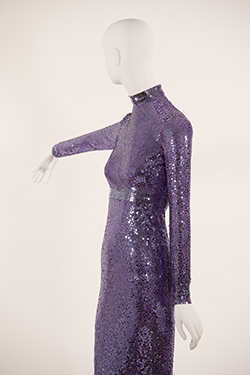
Norell, sequined evening dress, 1965. Photograph of Kenneth Pool Collection
© Marc Fowler.
© Marc Fowler.
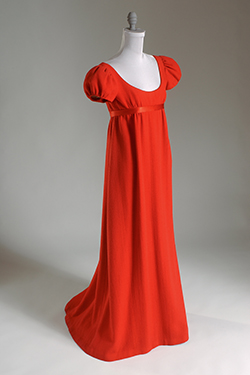
Norell, wool crepe evening dress, 1962. The Museum at FIT, gift of Claudia Halley.
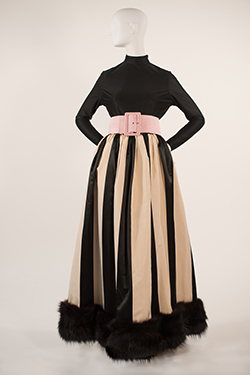
Norell, evening ensemble with striped duchesse satin ball skirt trimmed in black fox,
fall 1967. Photograph of Kenneth Pool Collection © Marc Fowler.
Born Norman David Levinson in Noblesville, Indiana, the designer adopted the more
soigné moniker of Norman Norell soon after studying illustration and fashion design
in New York during the early 1920s. He moved seamlessly from student to costume designer
and by 1924 had begun his career as a fashion designer. At the onset of World War
II, Norell entered into a two-decade business partnership with garment manufacturer
Anthony Traina and produced award-winning collections under the Traina-Norell label.
In 1960, Norell bought out his investors and his name alone began to appear on the
label. Norell: Dean of American Fashion focuses on the last 12 years of Norell’s career — 1960 to 1972 — his freest and most
innovative period.
Although Norell was not the first American designer to employ couture techniques, he was the most important creator to codify them at the ready-to-wear level. He was also one of the primary creators to profoundly alter existing perceptions about New York’s Seventh Avenue garment industry, at the time derisively called the “rag trade.” So outstanding was the quality of his ready-made dresses, coats, and suits that critics deemed his designs “the equal of Paris,” earning him another title — “The American Balenciaga.”
Although Norell was not the first American designer to employ couture techniques, he was the most important creator to codify them at the ready-to-wear level. He was also one of the primary creators to profoundly alter existing perceptions about New York’s Seventh Avenue garment industry, at the time derisively called the “rag trade.” So outstanding was the quality of his ready-made dresses, coats, and suits that critics deemed his designs “the equal of Paris,” earning him another title — “The American Balenciaga.”
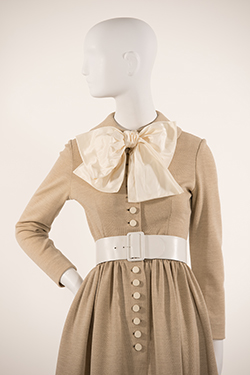
Norell, wool jersey shirtwaist with leather belt and silk taffeta bow, 1971. Photograph
of Kenneth Pool Collection © Marc Fowler.
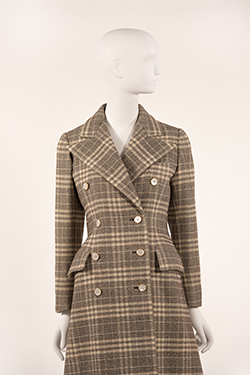
Norell, Prince of Wales tweed reefer coat, late 1960s. Photograph of Kenneth Pool
Collection © Marc Fowler.
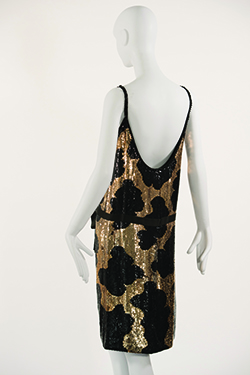
Norell, giraffe-print sequin dress, 1965. Photograph of Kenneth Pool Collection
© Marc Fowler.
© Marc Fowler.
Norell embraced the slow process of evolutionary design. He would refine and modernize
key concepts over a period of years, stretching into decades. Beginning in the 1940s,
Norell made coats and suits using wool jersey, often in contrasting colors. The effect
was bold, but also highly wearable, and would remain a staple of his annual collections.
The sailor suit — an outfit he wore as a child — was another idea Norell embraced
throughout his career. On view in the exhibition are versions made from cotton, wool,
and even silk organza. Inspiration from menswear was another key element of Norell’s
oeuvre. As in men’s clothing, pockets and buttons were always functional and each
of these elements was beautifully finished.
Norell was also an innovator. Channeling his love of the 1920s, he began designing lean, narrow flapper-style silhouettes during the 1940s. His mid-century chemise dresses were created a full decade before the style became popular in the 1950s. Another of his important innovations, the culotte for day and formal wear, debuted in 1960 and caused a sensation but took years to gain widespread popularity.
Norell was also an innovator. Channeling his love of the 1920s, he began designing lean, narrow flapper-style silhouettes during the 1940s. His mid-century chemise dresses were created a full decade before the style became popular in the 1950s. Another of his important innovations, the culotte for day and formal wear, debuted in 1960 and caused a sensation but took years to gain widespread popularity.
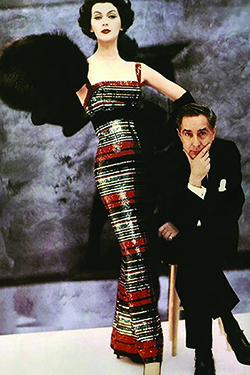
Traina-Norell, Roman-striped, sequined evening sheath worn by Dovima, 1959. Photograph
by William Helburn.
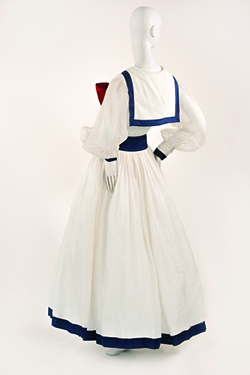
Norell, cotton organdy sailor dress, spring 1968. Photograph of Kenneth Pool Collection
© Marc Fowler.
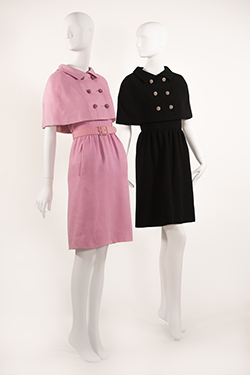
Norell, belted dresses with mini capes in pink linen and black wool, 1964. Photograph
of Kenneth Pool Collection © Marc Fowler.
The centerpiece of the exhibition is Norell’s dazzling eveningwear, especially his
glittering “mermaid” gowns. Painstakingly crafted in his atelier solely for the ready-to-wear
market, the mermaids are generously but carefully frosted with thousands of sequins
that were hand-sewn onto knitted jersey. While some of his designs had dramatically
plunging necklines and were embellished with sable trim or jeweled buttons, all his
formal clothing was noted for its clean lines and comfort.
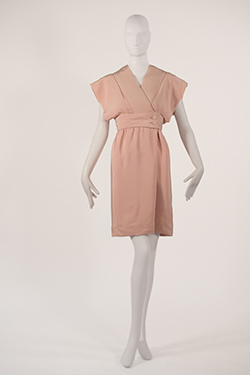
Norell, obi dress, spring 1965. Photograph of Kenneth Pool Collection © Marc Fowler.
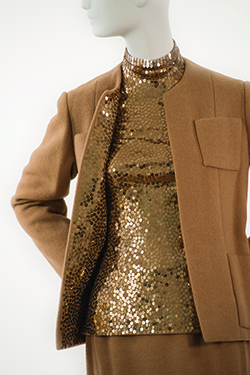
Norell, camel hair and paillette theater suit, 1971. Photograph of Kenneth Pool Collection
© Marc Fowler.
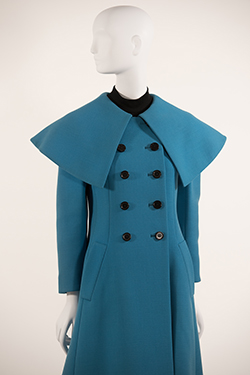
Norell, Pilgrim collar wool coat, fall 1968. Photograph of Kenneth Pool Collection
© Marc Fowler.
© Marc Fowler.
Not surprisingly, Norell attracted an A-list clientele, including stars such as Lauren
Bacall and several first ladies of the United States. His work was featured in hit
films and on television during the 1950s and 1960s, and Norell was rightfully celebrated
and lauded during his lifetime. More than 45 years after his death, we continue to
marvel at the rich legacy of the “Dean of American Fashion.”
The exhibition is accompanied by a book titled Norell: Master of American Fashion. Written by Jeffrey Banks and Doria de La Chapelle, it is the first monographic study
of this groundbreaking designer. It is published by Rizzoli.
Exhibition music credit: George Gershwin, Rhapsody in Blue, 1924. Performed by Royal Philharmonic Orchestra
Norell: Dean of American Fashion is made possible by the support of the Couture Council.
![]()


